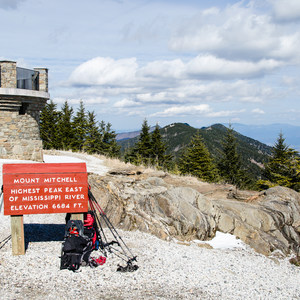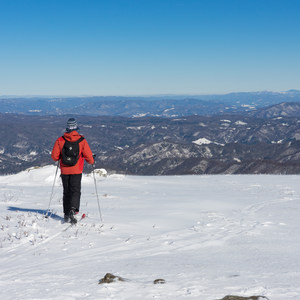You are here
Known as “The Grand Canyon of North Carolina,” the Linville Gorge Wilderness is the third largest wilderness in North Carolina after the Shining Rock Wilderness and the Joyce-Kilmer Slickrock Wilderness. The river sits a staggering 1,400 feet below the rim of the gorge, which makes for very strenuous hiking that is enjoyable to many who wish for difficult trekking without large crowds.
The flora and fauna of the gorge is diverse, and visitors can expect to see plenty of old-growth hardwood and pine along with bear, fox, raccoon, trout, grouse, wild turkeys, vultures, owls. Lucky hikers may also see hawks, and unlucky hikers should watch out for copperhead rattlesnakes and timber rattlesnakes.
Rough terrain made industrial logging impractical in the gorge, and that is the main reason that the gorge is one of the few remaining virgin old-growth forests in the Blue Ridge Mountains. Of the four major gorges in North Carolina, the Linville Gorge is the only one without a road at the bottom.
The hike begins at the base of the East Rim and traverses two of the high points in the gorge at Table Rock and Hawksbill Mountain. After a short and steep climb, you have the option of staying closer to the gorge and navigating a natural overhang along the cliffs or staying more above the cliffs with a wider field of view. The ridge is mostly rolling, with two major climbs to get to Table Rock and from Table Rock to Hawksbill.
After the mostly flat walk from the cliffs at the start of the hike, you’ll get a good view of the rest of the terrain that lies before you. A steep climb will get you to the Chimneys, a rocky ridge traverse near some excellent rock climbing spots just before the parking lot (with bathrooms and trash cans) that most people will use for day hikes to Table Rock mountain.
For those who want to take the wilderness path to Hawksbill from Table Rock, stay to the left at the junction and drop down until you see an open area used for camping. There is a very faint trail marked by pink ribbon that leads through the dense vegetation before getting to the main trail that wraps around the left side of Hawksbill to the summit. Get water from the camping area, as the two water sources along the climb to Hawksbill are very seasonal and shouldn’t be relied on. The climb will go through some steep rocky areas; just continue up and along the rock wall and you will eventually meet with the summit trail on the north side of the mountain.
There is a decent selection of campsites on the summit, which makes for great sunrise and sunsets. For an easier return trip, take the main trail out to the parking lot and follow the forest road south until you find the spur trail off the road that takes you back to the Table Rock intersection. Return the way you came or take an optional extension right after the Chimneys that leads down to the cliffs near the Amphitheater. This is recommended if you have the clothing to push through thick briars and depending on the time of year. The gorge remains a wonderfully untouched wilderness for those with good navigation skills and who want to shed the crowds.








Comments
Sign In and share them.